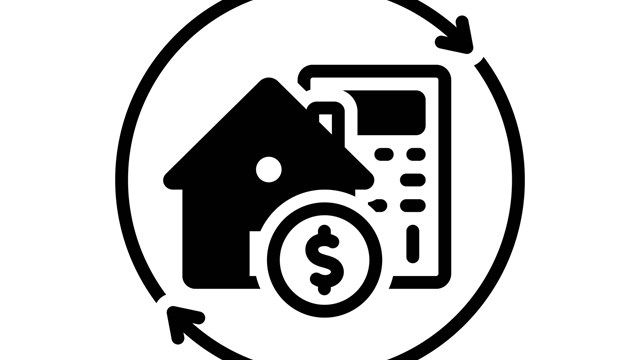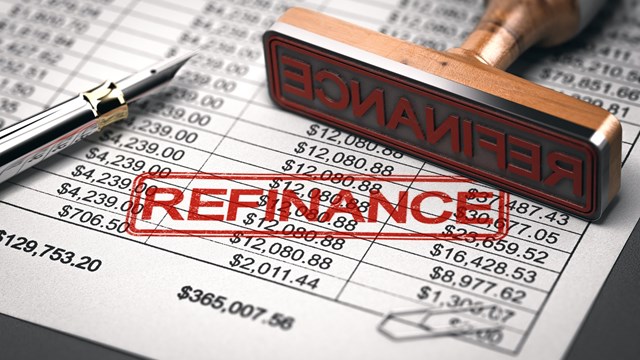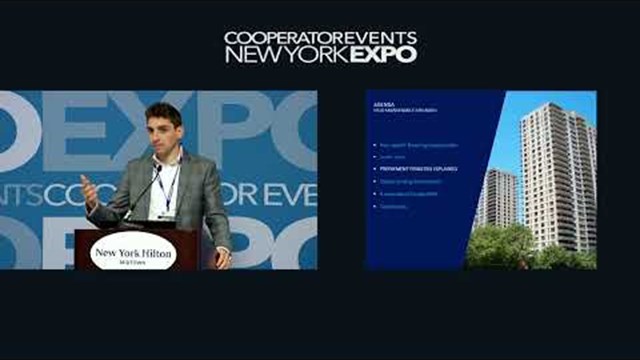
The words “housing crisis” still have the power to send shivers down the spines of homeowners who are still feeling the effects of the collapse of the market in 2008. That collapse was itself triggered for the most part by the writing of “bad” mortgages to homeowners who couldn’t afford to pay. While homeowners in New York City escaped much better than most of the rest of the country, the long-term repercussions can still be felt here, especially among condo and co-op owners.
In response to what was happening, the Federal Housing Administration and U.S. Department of Housing and Urban Development severely tightened their requirements for how much money buildings must carry in their reserve funds before prospective buyers can secure loans to purchase units within the building.
Bruce Weltin, associate vice president with home lender Shamrock Financial Corporation, says that new lending guidelines from HUD mean that FHA loan requirements will be significantly tightened for condominium sales and that may have a profoundly negative effect on the ability to sell or buy a condominium unit that requires FHA financing.
Unlike the world of “It’s a Wonderful Life,” when banks used to hold the loans themselves, it was about 30-40 years ago that loans started to be securitized, which means they package loans together and sell them through the security markets. Most of those go through Fannie Mae.
“What happened when all these loans started going bad, Fannie Mae started having issues and started looking at what they could have done to prevent this,” says Stephen Beer, CPA, of Manhattan-based Czarnowski & Beer, a certified public accounting, auditing and management consulting firm. “So, they came out with new guidelines, where banks have to follow a selling guide if they are going to be able to sell their loans to Fannie Mae. While meeting criteria for Fannie Mae, the bank figures if they have rules, they should have it on all their loans, so it ended up becoming the standard.”
The new requirements have caused worry and even panic among some boards who are already doing what they can just to keep daily operating budgets solvent in the face of ongoing arrears and defaults. Adding the need to beef up reserve funds is just adding to the worry.
The new guidelines represent a significant departure from the mortgage industry’s “glory” days of 2005, when practically anyone who wanted to own a home could. At that time, FHA loans had approximately a five percent market share, according to industry sources.
Those days are long gone as the sub-prime mortgage market no longer exists, and Fannie Mae and Freddie Mac underwriting guidelines have tightened dramatically.
According to Thomas Wilke, an appraiser with the U.S. Department of Housing and Urban Development, HUD enacted these new lending requirements for certain types of federally insured mortgage loan programs due to the declining housing market, recent turmoil in the credit markets and residential mortgage industry.
“One such rule change with far-reaching implications for condominium associations and community management companies, is the new underwriting requirement making it mandatory for all existing condominium associations to maintain minimum percent funded levels in their reserve account in order to qualify for FHA insured mortgages,” he says. “An existing association is defined by HUD as any condominium association which is not under the control of the original declarant.”
For condominiums, that requirement involves having 10 percent of their monthly collections set aside for reserves or deferred maintenance. That’s a huge increase and no one wants to pay more.
The 10 Percent
For most developments in New York, what people were used to having were special assessments if there was a problem, and they would pay extra maintenance and pay for the work that had to be performed. Then the FHA came out with these guidelines where there had to be 10 percent for reserves and essentially that created a situation that many weren’t ready for.
“It’s not just about having 10 percent in a bank account to get compliant, it’s about regardless of how much money you have, to continue to put aside 10 percent of your common charges,” Beer says. “If you are paying $1,000 a month on your condo, $100 has to go into an account whether you spend it or not. There’s no restriction on how much a building spends.”
Orest Tomaselli, chief executive officer, National Condo Advisors LLC in White Plains, whose company specializes in helping co-ops and condos get compliant with the new regulations, says it’s an issue that affects everyone.
“We’re responsible for 80 percent of approvals in the New York City area and 20-25 percent of those across the country,” Tomaselli says. “As far as getting buildings non-compliant to a complaint place, there are solutions. It’s not impossible. We help get them to the point to get FHA approval.”
On a regular basis, he hears a client make the following comment: “Three months ago we didn’t have requirements for this.” And one of the biggest misconceptions people make is thinking that they are not really required.
“People think there’s a way around it. The guidelines within the FHA have been changing yearly or regularly since 2008 and it’s not getting easier for a bank to lend money, specifically in co-ops and condos,” he says. “Fannie Mae has tightened up its policy for limited reviews and the FHA question out there has caused a situation where a lot of these people have issues. There are solutions to this issue.”
To help, Tomaselli’s company will often go into a board meeting and review the FHA guidelines with the board so everyone understands what needs to be done from a compliance standpoint.
“What we typically do is go into a board meeting, and give education to board members and then do a review of their documentation and financials and bylaws and see what is compliant,” he says. “Sometimes there are circumstances where developments are reserving but not per guidelines, partially reserving or calling it something else. Sometimes they are already reserving three percent and don’t even know it so it’s not always as difficult as it might seem to be compliant.”
Preparing for the Worst
When word first came out that the new requirements were going to happen, some of the boards put their head in the ground and property managers didn’t represent their properties properly.
“We were out there telling our clients how to deal with it and tried to phase it in over a couple of years,” Beer says. “Some are moving along but the ones who put their head in the sand and felt this wasn’t a big issue are feeling it the most now. They are getting calls from their unit owners that their deal is falling through because the buyer can’t get financing. That’s what happens if the guidelines are not followed.”
Tomaselli believes that the 10 percent line item is arbitrary, as if someone just picked a number and the problem with that is some communities need more than 10 percent and some need far less than that.
“It all depends on if they maintained the property accurately and if they replaced their systems in a timely fashion,” he says “Let’s say you have a building built three years ago and in order to be compliant with FHA financing, you need to have a 10 percent line item in reserve. That building has systems that might last for 35 years before they need to be replaced, so the 10 percent is overkill. Why put this undue duress when they might only need three percent or five percent? That’s what we’re seeing more regularly in condominiums.”
Selling Issues
If you’re trying to sell a condo in a building that’s non compliant, Beer says you should be prepared for some disappointment.
“Their loan would be hard to go through,” he says. “The building is ineligible and probably won’t be able to do the loan. Some buildings and banks have exceptions but my understanding is they are harder and harder to get.”
According to Tomaselli, for the first time ever, there’s hard data to prove there’s a relation between being compliant and the value of development.
“If you ask a homeowner trying to sell a unit in a condo that doesn’t have FHA compliance, they will tell you how hard it is,” he says. “Lending is paramount right now. If you don’t have financing, the values of the units will go down and people will have a hard time financing and it becomes detrimental.”
For buildings that aren’t compliant, he continues, there’s always a bank willing to lend, but the buyer pool isn’t as strong.
“As an example, a building in Manhattan in the price point of $4.5 to $5 million, you’ll have purchasers who have $5 million in a bank account and the lender is going to make a loan for them regardless of compliance,” he says. “The problem with that is the buyer pool that has that type of qualification is few and far between.”
Beer adds that someone who pays in all cash could be making a big mistake because if they ever want to take out a mortgage for some great investment opportunity, you’re not going to be able to capitalize on that equity.
Once a particular association is approved for FHA lending guarantees there is no requirement that they re-qualify at a future date. However, that does not mean once you are approved by HUD you can forget about your reserve funding program. Even after an association has received HUD approval for FHA loans, all subsequent loan applications must include an updated reserve study as part of the document package submitted to underwriters.
Keith Loria is a freelance writer and a frequent contributor to The Cooperator.






Leave a Comment